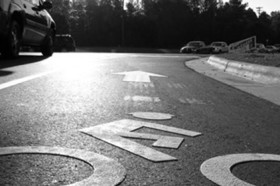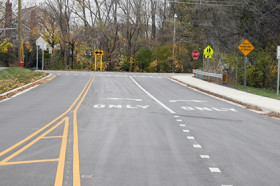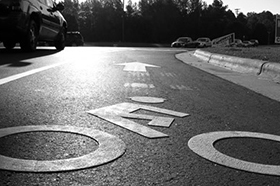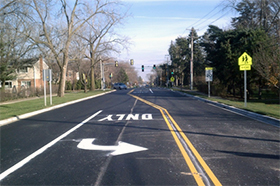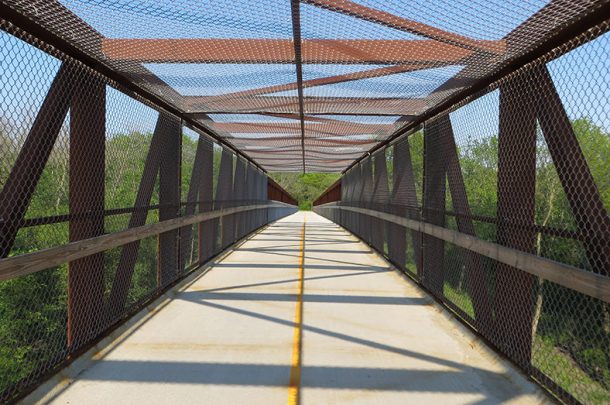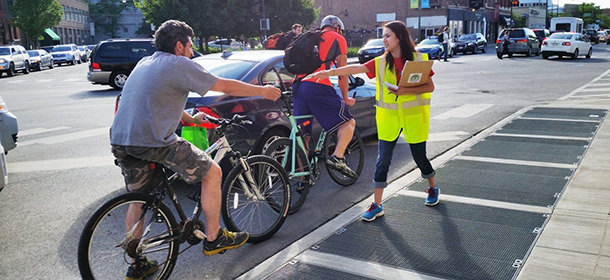
These days, there are more motorists, bicyclists and pedestrians sharing the road than ever before, which has recently brought safety for all roadway users to the forefront. In response to new and innovative bicycle and pedestrian facilities proposed and built in the Chicago Metropolitan Area, the Illinois Department of Transportation (IDOT) is embarking on a study to analyze the safety and feasibility of bicycle and pedestrian accommodations in District One (Cook, DuPage, Lake, McHenry, Kane and Will Counties). Primera was brought on to identify and evaluate the performance of various strategies such as: protected bike lanes, buffered bike lanes, bike traffic signals, pedestrian scrambles, High-intensity Activated crossWalK (HAWK) signals, Rectangular Rapid Flashing Beacons (RRFB), and others. The overall study consisted of 22 bicycle and 15 pedestrian facilities or features. Many of these facilities have been installed around the country but may be relatively new to the Northeast Illinois Region. The study will illustrate how these facilities function operationally, impact safety of the users, and how they are maintained, all within the context of the unique climate, cultural and economic conditions of Northeast Illinois. No study of this magnitude and breadth has ever been accomplished before in the Illinois area.
This study took into consideration the recently released Illinois Statewide Bike plan. Primera met with the authors of that plan to discuss how to implement the various recommendations. Furthermore, Primera consulted with numerous municipal and state departments of transportations around the country to gain insight into the function and effectiveness of these facilities. In addition to interviewing DOTs around the country, Primera is reviewing the state of existing research by reading through hundreds of technical papers, DOT reports, blog postings, and newspaper articles. The research aggregation will be summarized in the final report. The research summaries alone will add valuable insight to the bicycle and pedestrian design community.
Wherever research is lacking or does not apply to Northeast Illinois, Primera planned and implemented numerous studies to determine the safety, operational and maintenance impacts of the facilities. Based on research compiled by the Federal Highway Administration (FHWA) manual on Pedestrian and Bicyclist Traffic Control Device Evaluation Methods, Primera decided on appropriate evaluation designs, compiled an exhaustive list of bicycle and pedestrian measures of effectiveness (MOE), and performed dozens of field studies. Example MOEs include speed, behavioral, or compliance studies, user surveys, and modal split observations.
The chosen MOE depended on the facility being studied. The exhaustive MOE list was developed in order to overcome shortcomings in available data, lack of installed facilities, or small sample sizes by providing options to measure the facility’s effectiveness. This list is also a first for traffic engineering studies in the country. No list of this magnitude, which compiled studies from various federal, state, and municipal publications, has been assembled. It allows us, as well as other engineers, the ability to quickly choose and determine the best MOE to use when evaluating facilities in their area.
One of the best MOEs to use is crash rates. Crash rates are developed by comparing the number of crashes to the number of bicyclist or pedestrians using the facility, typically reported as Average Annual Daily Bicyclists (AADB) for instance. They are objective and rely on state recorded crashes which are generally recognized as being accurate and consistent when measuring the performance of a facility across several years. In order to calculate the AADB for a particular facility, short term counts are performed and then the results are extrapolated out to annual counts. The problem lies in the variability of non-motorized traffic patterns. This variability is adjusted for through the use of conversion factors which take into account hourly, daily, monthly and weather effects on the number of bicyclists using the facility within a certain geographic area. To accurately calculate these factors, there needs to be a set of continuous, 24-hour counts taken at multiple locations for an entire year. These continuous counts have yet to be performed anywhere in Illinois. Primera researched existing count programs in Illinois and made recommendations to IDOT to institute a permanent bike count program. Permanent counts can also positively impact other facets of bikeway funding, planning, and engineering.
IDOT is committed to driving zero fatalities to a reality for all roadway users, including some of the most vulnerable: pedestrians and bicyclists. Primera’s study will help accomplish this goal by providing IDOT the confidence it needs to determine which facilities will work for District One, ultimately making roadways safer for all users. For additional information about this project or about conducting bicycle and pedestrian studies in your area, please contact Frank Zurek.
Sources:
U.S. Department of Transportation Federal Highway Administration (FHWA). Pedestrian and Bicyclist Traffic Control Device Evaluation Methods. FHWA-HRT-11-035. By Susan T. Chrysler, Kay Fitzpatrick, Marcus A. Brewer, and Mike Cynecki. McClean, VA: Office of Safety Research and Development, 2011.






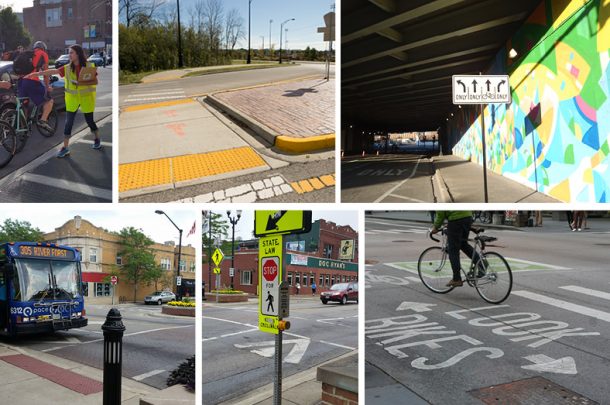
 The Rise, Fall, Rise of Bicycling
The Rise, Fall, Rise of Bicycling 
